“Water Lilies” by Claude Monet – Analyzing Monet’s Water Lily Art
The Water Lilies painting series is the artwork series that Claude Monet is best known for. During his life, Monet created multiple iterations of the water lily pond at his house at Giverny in Normandy. So, how many Water Lilies did Monet paint? Why did Monet paint Water Lilies? And, where did Monet paint Water Lilies? In this article, we will answer these questions and more by taking a close-up view of this famous water lily art.
Artist Abstract: Who Was Claude Monet?
Born in Paris on 14 November 1840, Oscar-Claude Monet was meant to become a shopkeeper. Despite the career plan his father had for him, Monet decided to become an artist. His love for drawing was clear from a young age and luckily his painter aunt Marie-Jeanne Lecadre took him under her encouraging wing. He had another art mentor at his school in Le Havre, François Ochard (1800 – 1870). Monet created caricatures from a young age and left school early to sell these drawings in his city.
Later in his life, around 1858, Monet shifted his focus to painting landscapes. Eugène Boudin (1824 – 1898) introduced him to Plein Air landscape painting and mentored him after Monet has briefly part of the military.
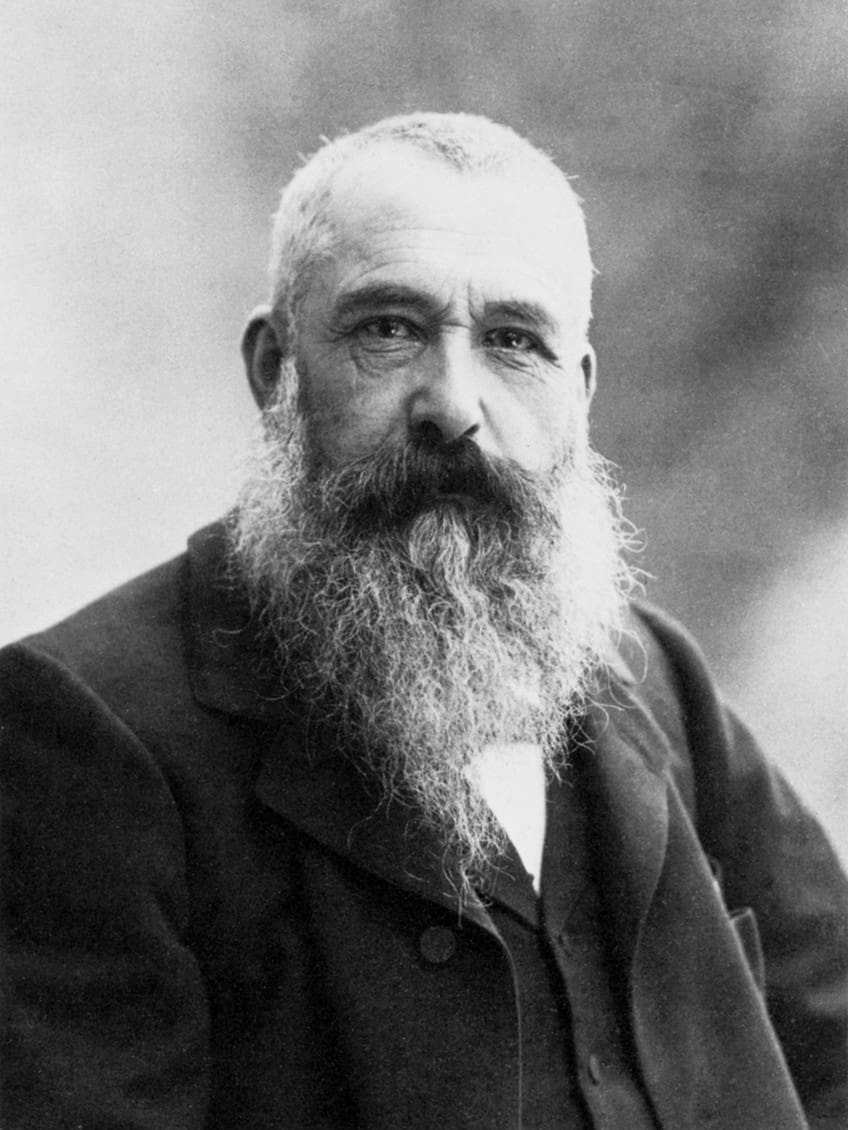
He became fascinated with the changing effects of light and how color might capture this quality in a natural landscape. Monet devoted a large part of his adult life to gardening and painting his garden. His feathery brush marks and vibrant colors made him one of the most recognizable Impressionist painters of the 19th century. He passed away in 1926.
Water Lilies by Claude Monet in Context
| Date | 1897 – 1926 |
| Medium | Oil on canvas |
| Type of Painting | Landscape |
| Movement | Impressionism |
| Dimensions (cm) | 48 x 63 |
| Location | Musée Marmottan, Paris, France |
| Current Value | $250-350 million |
Monet started producing the first water lily studies after he bought an estate in Giverny in 1890. He immediately started redesigning and extending his garden. In 1893, he bought an adjacent plot that linked his property with the small Ru River. On this extra piece of land, Monet created a water-lily pond with a wooden bridge in Japanese style. The pond was surrounded by willow and ginkgo trees. He extended the pond further in 1901 and diverted water from the Ru. In the end, Monet’s ponds were a total size of 1,000 square meters.
He did not plant this water lily pond with the idea in mind to paint them. He famously said that he created this Asian-inspired garden out of pleasure and then realized how much he desired to paint them.
Between the first painting of the water lilies and when Monet returned to this subject in 1914, his life and practice were disrupted by multiple travels and personal tragedies. Among these disruptions were the death of his second wife Alice in 1911, the start of the First World war, he was faced with increasingly deteriorating eyesight, and his son, Jean, also passed away in 1914.

The painter went through a personal and creative crisis at this stage of his career. However, with the encouragement of the politician Georges Clemenceau to realize his life-long dreams, Monet turned towards his love for creating and painting the lily ponds and started painting the magnificent Grandes Décorations.
Contextual Analysis: A Brief Socio-Historical Overview
The obsession with the water lilies stayed with Monet for three decades up to his death. This time of his career was marked by a lot of political unrest as tensions rose leading up to the First World War. When he started painting the ponds it was only for his own pleasure, but as the war started Clemenceau encouraged him to create the big panels he dreamed of. Monet wanted to create something that could add to the French public’s positive state of being.
Monet started painting the massive Grandes Décorations series with the intention to create spaces for calm and meditation in Parisian public spaces. He donated these works to the French state and they have been showcased at the Musée de l’Orangerie ever since.
Water Lilies by Claude Monet Analysis: A Brief Compositional Overview
Before Monet started painting the water lily ponds in his garden at Giverny, he painted lots of water scenes – experimenting with the changing effect of sunlight reflecting on the water. He painted a series of the Seine River and many landscape scenes in London of the Waterloo Bridge and the parliament building reflected in the water of the Thames River. Monet and Alice also traveled to Venice for two months in 1908, where he again explored painting water and the reflection of light on the surface.
What makes his Water Lilies series fundamentally different from these previous works, is the big compositional changes he made from the way he normally worked.
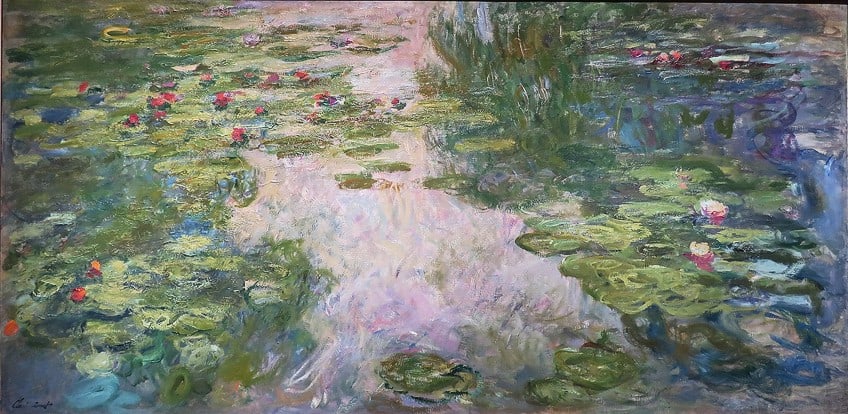
By zooming in on the pools and the reflections on the pools, he cut out the horizon from his work altogether. In his previous work, as well as in most traditional landscape paintings, the horizon line acts as the stabilizing compositional quality. This means that Monet’s removal of the stabilizing element allowed the eye of the viewer to roam the painting freely without direction or perspective.
Flipping the Traditional Composition
This shift made the bright and lighter area (which would have traditionally been the sky) the bottom part of the painting with the clouds and sky reflected in the water. The darker and heavier part of the painting on the eye became the top part of the painting. This is a direct flip of the classic way compositions were structured as Monet painted the visual weight upside-down.
The first smaller paintings of the water lilies, however, included the bank of the pond at the bottom of the composition. He painted the dense vegetation on the pond’s side, keeping a bit of reality intact.

By 1905 he left this out altogether. This dissolved the illusionary connection the painting has with the reality it portrays. Monet’s reality became entirely the water and its reflection – making his water lily art even more focused on mark-making, color, and light. This compositional shift, which made each element of the painting only a fragment of reality, made the water lilies paintings wall decorations instead of scenes portraying specific places and things.
Circular Wall Paintings
Monet pushed the compositional changes to his style even further in 1914, when he decided to finally put all his energy into creating his dream of a circular room filled with water lily art. The practical purpose of his paintings being wall decorations was realized in his Grandes Décorations.
He shifted and fragmented the compositions of the paintings that made up this series even more, by splitting the compositions up into separate panels.
Subject Matter
The subject matter of these famous water lilies paintings is, of course, the water lily ponds at Monet’s estate in Giverny in Normandy. But more so, the light quality and effects of the reflections on the pond is at the center of this artist’s intention. The later paintings Monet created that formed the big Grandes Décorations series, were created with the intention to convey a meditative calming feeling.
He decided to donate the paintings to the French State on Armistice Day on 12 November 1918, reinforcing this series as being about peace.
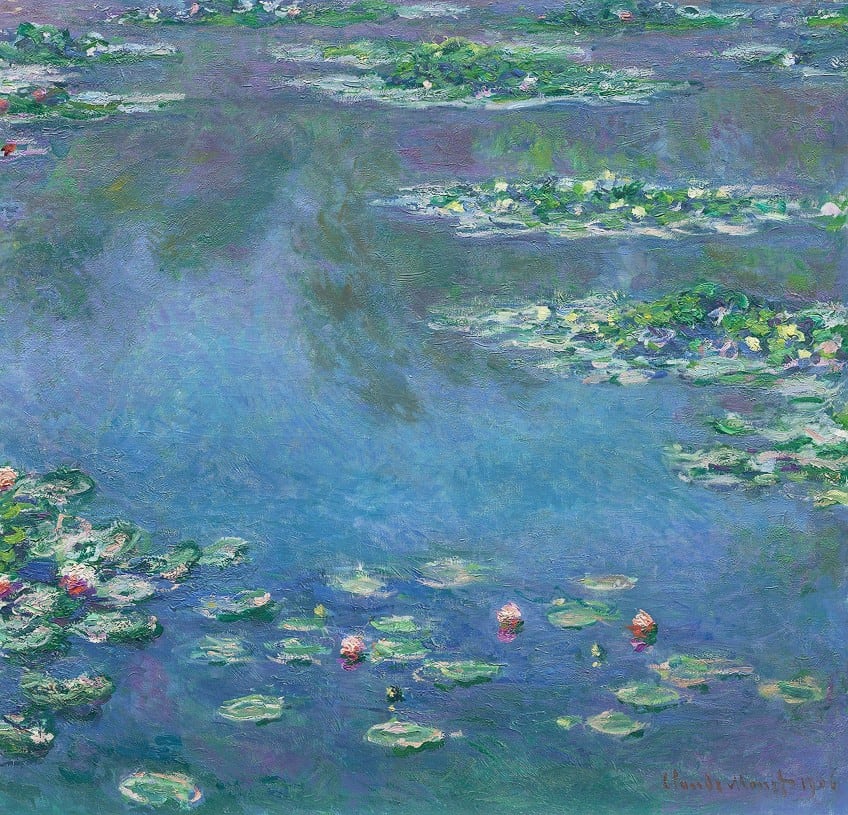
Color and Light
What made Water Lilies by Claude Monet the most recognizable and famous Impressionist painting is really the way he portrayed color and light in them. Color became the bases of Impressionism because of several reasons we will discuss in this section of the article so that we might understand why the color and light quality of this series was so revolutionary.
From Drawing to Color as a Painting Base
Up until the Impressionist movement, the drawing of the scene that was going to be painted was the base of any painting. Artists prized themselves on developing their drawing skills in order to get the perfect composition. This meant that they worked only from their studios. They also made multiple drawing studies and then painting studies before painting the final work over a “perfected” drawing.
The drawing underneath the final painting became irrelevant when Impressionists became more fascinated by capturing the immediacy of the scene.
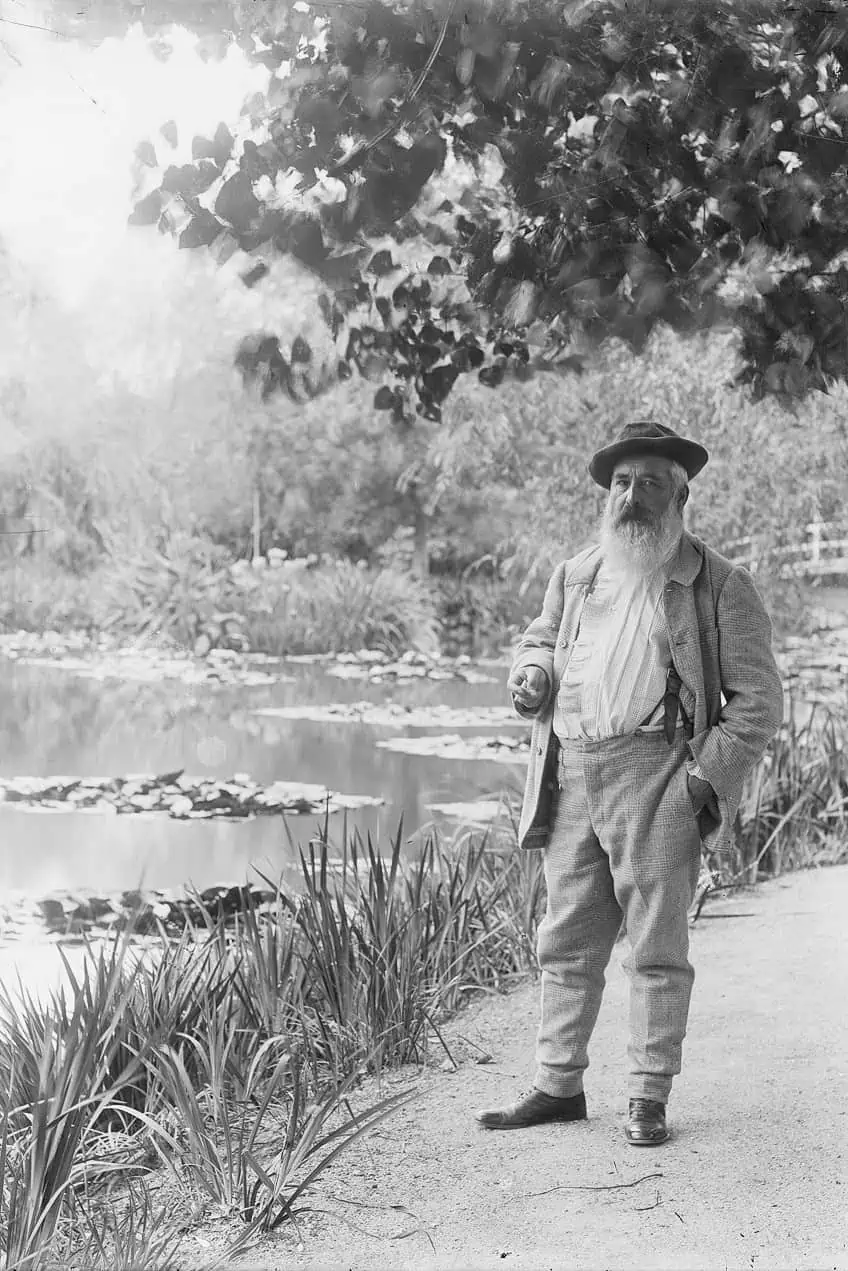
They were specifically focused on capturing the momentary changes of light on a landscape or setting. This meant that there was no time to draw the scene first before starting the painting, as light changes so fast. This change in approach led, for the first time ever, to artworks that were not about creating the perfect composition, but instead about creating the perfect mood of a specific scene.
This is why color became so important to the Impressionists.
New Paints
Until the middle of the 19th century, the spectrum of colors that were available to artists was limited and much less vivid. Because of this fact, artists felt the inadequacies of their mediums. Therefore, sunlight, for example, was seen as impossible to reproduce in paintings. Once painting outside became more accessible and established among the Impressionist painters, color became the number one medium of the 19th century. Scientists, parallel to the Impressionist movement, became fascinated by the perception and reproduction of colors seen in nature.
They started creating new paints that were much brighter than the previous era. These paints were also marketed, for the first time ever, in tubes – making Plein Air painting even more popular.

Before this color development, light was shown in a composition simply by painting light-dark contrasts. Delacroix, however, spearheaded a movement to replace these light-dark contrasts in painting with strong color contrasts. This led to the increasing use of complementary colors in paintings in an attempt to show the vibrancy of nature produced by the quality of sunlight. These color contrasts are very evident in Monet’s paintings, especially in the water lily art.
If you look at the Water-lilies painting from 1907, where Monet painted either a sunset or sunrise reflected in his beloved pond, we can see how he used bright reds, oranges, and yellows to contrast with shades of green, blue, and purple-toned shadows.
Colored Shadows in the Famous Water Lilies Paintings
Besides the vividness of the new Impressionist colors, artists also started moving away from painting shadows in black or altogether stopped using black without color in it. Instead, shadows were mixed with multiple colors and included mainly complimentary colors to the bright colors the forms were painted in. This shift in shadows is evident in Monet’s Water Lilies (1907). In this painting, Monet created a zoomed-in and cropped version of the pond, only painting a small area of it on a large-scale canvas.
The depths of the water and the shadowy side underneath the bright leaves and lilies were painted in dark purple and gray-brown shades. There is absolutely no flat, colorless black in this painting.
Perspective and Space
As stated above, Monet removed the perspective from his paintings by cropping the composition to only be focused on the water of the pond. However, the illusion of space is created with darker and lighter shades to create the idea of the water’s depth. The flat color planes of the floating leaves and flowers contrast with the translucent washes of shadowy shades to create the fantasy that the lilies are floaty on the murky water.
Symbolism and Style
In French, these paintings are called The Nymphéas, which means “Water Lilies”. The Greek origin of the word “nymphéa” is numphé, which means “nymph”. The connection between this beautiful water flower and the word “nymph” comes from a Classical myth that tells the story of this flower’s being conceived from the heartache of a nymph that was dying because of her love for the demi-god Hercules.
Whether Monet made this connection between the origin of the word and the flowers he painted, is unclear. However, the style in which he painted the works – largescale and immersive- as well as his personal obsession with these flowers link beautifully with the intensity and all-consuming nature of the love and heartbreak of the mythical story.

The style Monet painted the massive panels in, was also influenced by his exhibition considerations. The artist planned the paintings to react to weather changes in the final space in which they would be installed. He considered the volumes, rhythm, forms, and spaces between the canvases so that the viewer would be guided in a full-body experience of his paintings.
He planned to include multiple entrances to the exhibition space, ensuring enough natural light would be in the space to make the paintings resonate with their origin: the natural environment of his garden.
Process of Creating the Water Lilies Series
As explained above, Monet started painting the water lilies in his garden purely out of the love and obsession he had with them. It was only after the death of his wife Alice in 1911 and his son Jean in 1914 that Monet allowed himself to create the pond paintings on the large-scale panels he had dreamt about since the start. Monet was, however, very doubtful about this project and felt more insecure as his health and eyesight continued to deteriorate throughout the process of painting large-scale paintings over several years. His friendship with the politician Georges Clemenceau was his saving grace.
During the First World War, Monet persisted in his process of painting outside when the weather allowed it and then altering and reworking areas of the compositions in his studio.
He was creating these paintings out of personal necessity, but as the war drew to a close that changed. As he was about to complete the first two massive panels meant to be wall decorations, he wrote to Clemenceau asking if he would assist him in donating these paintings to the state. It seems as though Clemenceau convinced Monet to give the whole series to the state – as the painter had no idea where he would exhibit the final collection. Monet agreed and solidified this deal in an agreement with Paul Léon, director of the Musée des Beaux-Arts, in 1920.

They agreed on the donation of 12 decorative painting panels, which Léon agreed to install in line with the artist’s directions in a special building when they were done. Although the agreement was made – and adjusted in 1922 to include 19 paintings in total – Monet was still not entirely happy with the painting panels and insisted on continuing his edits. Records show that in this dissatisfaction and fits of insecurity, Monet even destroyed some of the completed paintings. Clemenceau tried to comfort the aging artist that he had reached the boundary of what he could capture of the ponds on canvas, but this plea was in vain.
Monet continued to edit and paint these works until his death in 1926. After which Clemenceau carried out the wishes of the artist exactly in how they were to be installed for display.
Reception: Why Are Monet’s Famous Water Lily Paintings So Influential?
As mentioned above in the technical analysis of the Water Lilies, Monet broke many traditional painting rules in the creation of these large-scale artworks. He was a revolutionary artist that fully embodied the Impressionist philosophies. This made the expression of impressions and capturing the mood through art possible for so many artists that followed him.
The Musée de l’Orangerie exhibited eight of the massive painted panels after Monet’s death – and still has them on display today.
Besides the technically controversial style of painting, Monet also instructed that the backing of these canvases be removed so they can wrap around the walls of the circular exhibition spaces. This makes the lily paintings more of an installation than an exhibition as it allows the viewer to be embraced by the watery scenes. This was also another pioneering decision on Monet’s part and further proof of the meticulous thought that went into every aspect of this body of work.
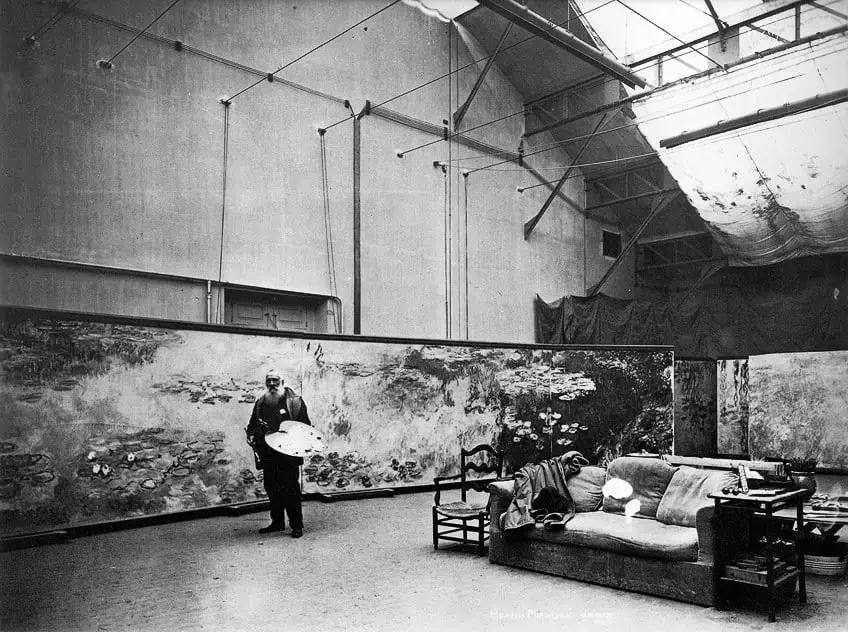
Although today we understand the impressiveness of these vast compositions, the paintings were not met with much excitement when they were first shown to the public. In 1927, when the Musée de l’Orangerie opened her doors to viewers, Dadaism, Fauvism, Cubism, and Surrealism were popular and artists had new agendas that made Impressionism look old-fashioned.
The public audience would not really embrace Monet’s genius paintings for several decades and the museum even created fake walls in front of the installation to show other artworks in temporary exhibitions. Considering this anticlimactic reception, it might have been for the best that the artist himself was not present at the opening of the show considering the insecurity that plagued him throughout the process of creating his dream series.
It was only after the Second World War that people became interested in the Grandes Décorations. In the 1950s this interest grew even more with André Masson calling the installation the “Sixtine Chapel of Impressionism”. Collectors started buying up paintings of the Water Lily series that were still stored in the artist’s studio. The MOMA bought one of the massive panels of Grandes Décorations and put it on display in 1955. Art critics were drawing comparisons between Monet’s feathery abstractions and the popular abstract expressionist paintings by Rothco and Pollock, for example. And so, Monet’s fame continued to grow until he became a name that is undeniably associated with being a master.
New Technology: The Relevance of the Famous Water Lilly Paintings Today
This fame Monet reached after his death continued even into the 21st century. In 2022, a new immersive exhibition was opened by The Immersive Museum in Tokyo. Monet’s Grandes Décorations is transformed into massive light projection shows that allow the audience to view his masterpieces on an even bigger scale and walk right into them and through them.
This interactive and new technology brought the artist back into the limelight as the exhibition is making its way around the world to showcase the painting projections in major cities.
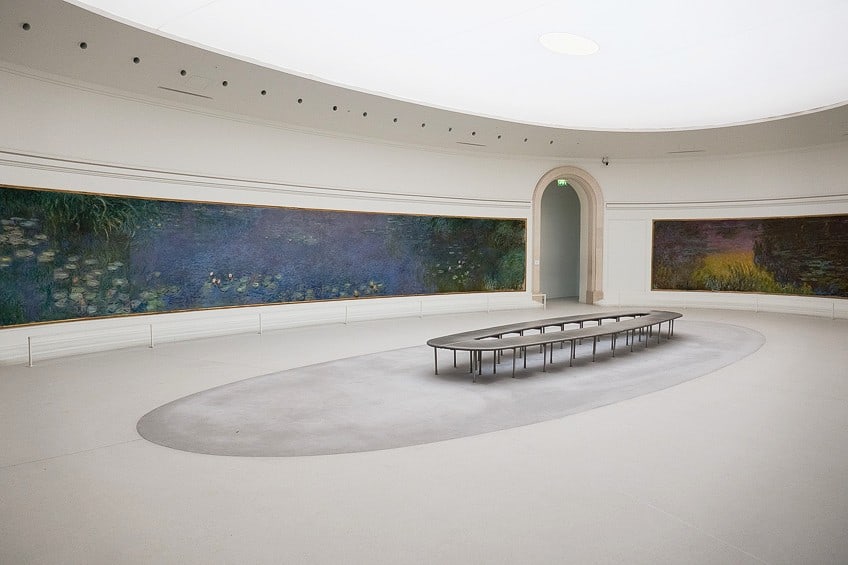
The intention of these exhibitions is to take Monet’s dream of creating art-filled rooms that ship the viewer into a completely different space one step further. Besides his water lily paintings, the show also includes the famous Impression, Sunrise (1872), and some of his House of Parliament works. Other Impressionist artists like Edgar Degas, Auguste Renoir, and Mary Cassatt is also shown in this large-scale light show.
Claude Monet is best known for his incredible water lily pond paintings that broke through so many traditional art techniques and styles. He created multiple studies of his precious water lily pond at his estate at Giverny, but the most famous of these is the installation of the Grandes Décorations. These immersive and enormous canvases led to the artist’s immortal fame after his death and made him an artist whose work is still reworked with modern technology to keep it relevant.
Frequently Asked Questions
How Many Water Lilies Did Monet Paint?
Claude Monet created close to 300 paintings of his beloved water lily pond. More than 40 of these paintings were large-scale. It is difficult to know exactly how many water lily paintings he created, as the artist is known for destroying some of the works in fits of doubt and insecurity.
Why Did Monet Paint Water Lilies?
Claude Monet was obsessed with gardening and created his dream Asian garden when he bought a property in Giverny. After creating a peaceful water garden with a Japanese bridge, Monet became fascinated by capturing the mood of the pond in his painting works. It became the biggest study he did of the changes of light and reflection on water at different times of the day and year.
Where Did Monet Paint Water Lilies?
Monet painted his water lily paintings at his estate at Giverny in Normandy. He famously worked outside on days the weather permitted it, capturing the ponds in collaboration with the natural elements. At that stage in his life, however, he did also rework paintings in his studio until he felt satisfied.
Nicolene Burger, a South African multimedia artist and creative consultant, specializes in oil painting and performance art. She earned her BA in Visual Arts from Stellenbosch University in 2017. Nicolene’s artistic journey includes exhibitions in South Korea, participation in the 2019 ICA Live Art Workshop, and solo exhibitions. She is currently pursuing a practice-based master’s degree in theater and performance. Nicolene focuses on fostering sustainable creative practices and offers coaching sessions for fellow artists, emphasizing the profound communicative power of art for healing and connection. Nicolene writes blog posts on art history for artfilemagazine with a focus on famous artists and contemporary art.
Learn more about Nicolene Burger and about us.
Cite this Article
Nicolene, Burger, ““Water Lilies” by Claude Monet – Analyzing Monet’s Water Lily Art.” artfilemagazine – Your Online Art Source. March 7, 2023. URL: https://artfilemagazine.com/water-lilies-by-claude-monet/
Burger, N. (2023, 7 March). “Water Lilies” by Claude Monet – Analyzing Monet’s Water Lily Art. artfilemagazine – Your Online Art Source. https://artfilemagazine.com/water-lilies-by-claude-monet/
Burger, Nicolene. ““Water Lilies” by Claude Monet – Analyzing Monet’s Water Lily Art.” artfilemagazine – Your Online Art Source, March 7, 2023. https://artfilemagazine.com/water-lilies-by-claude-monet/.



